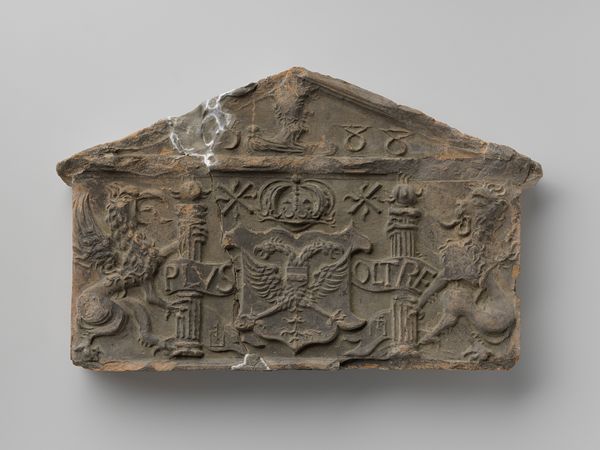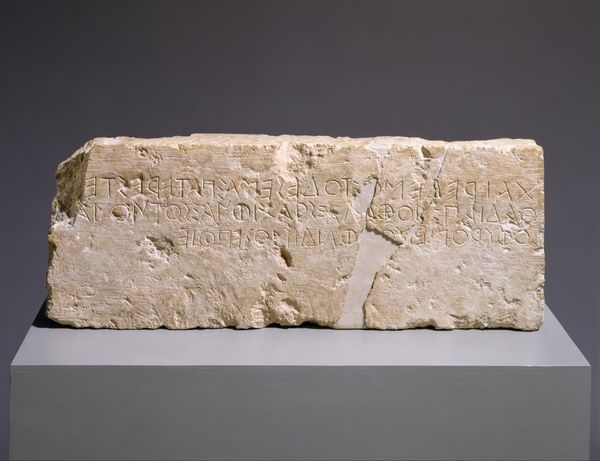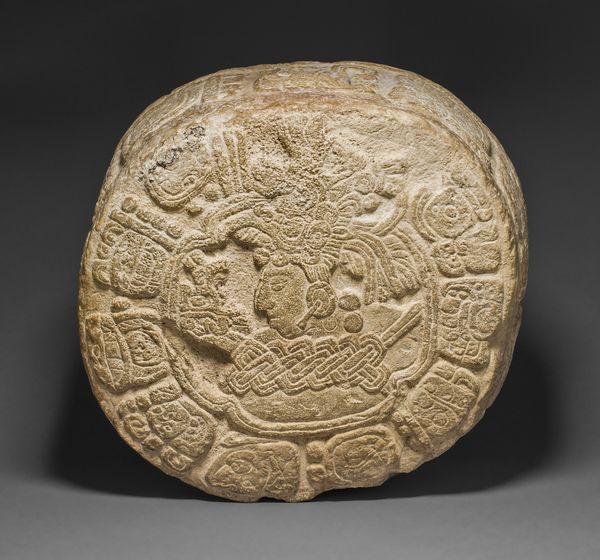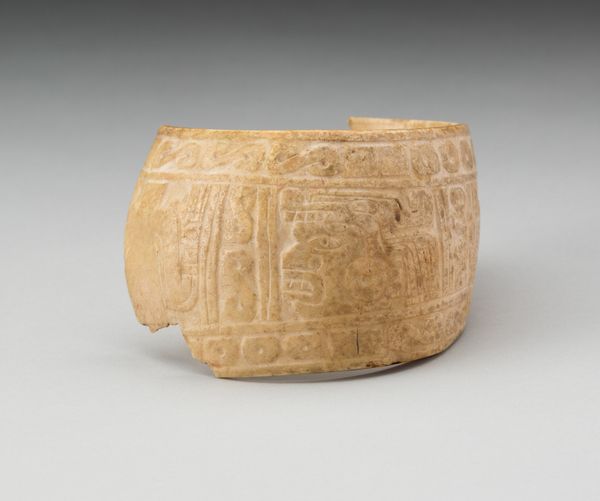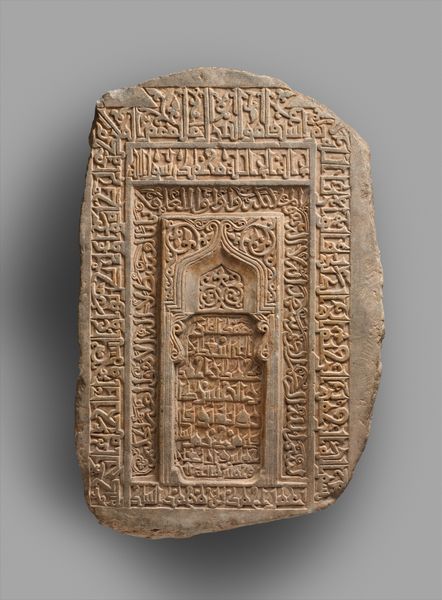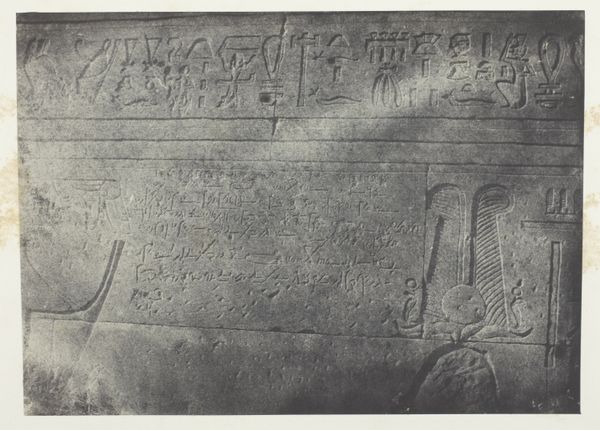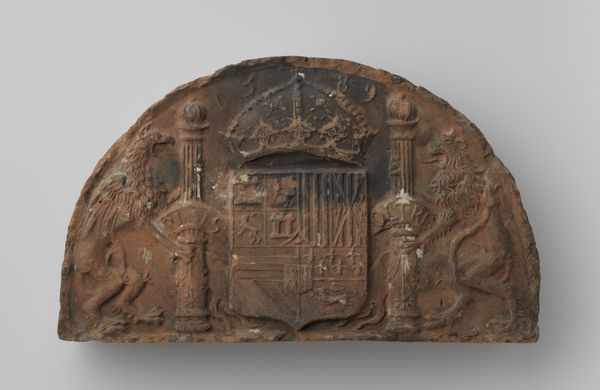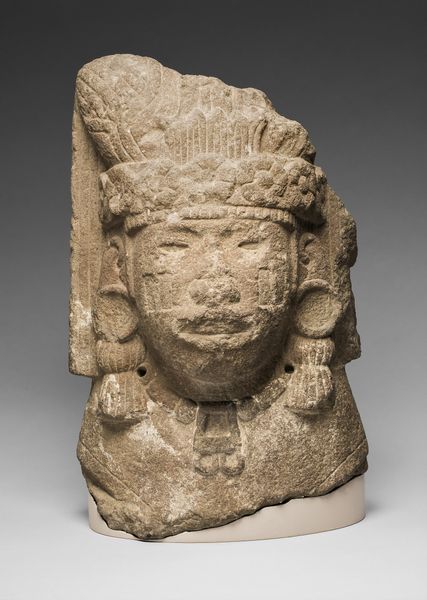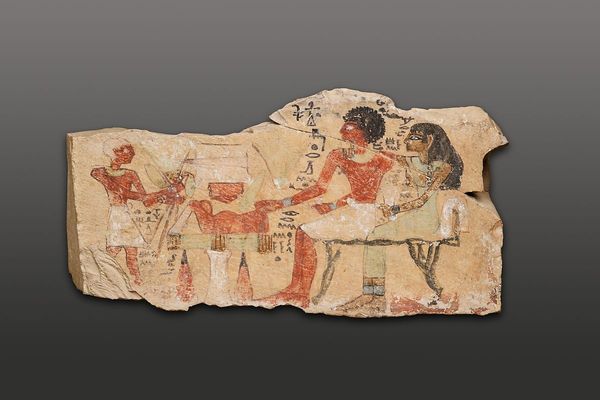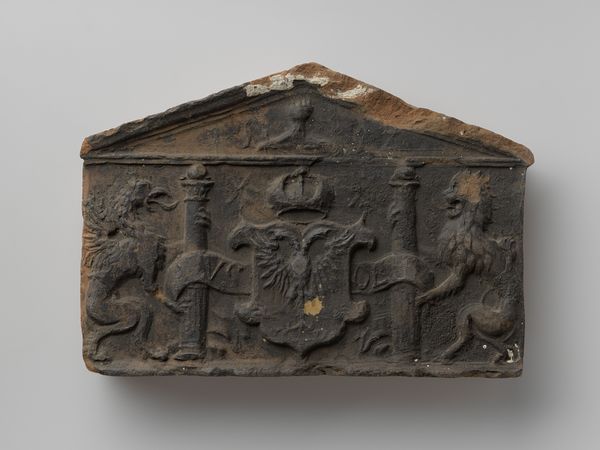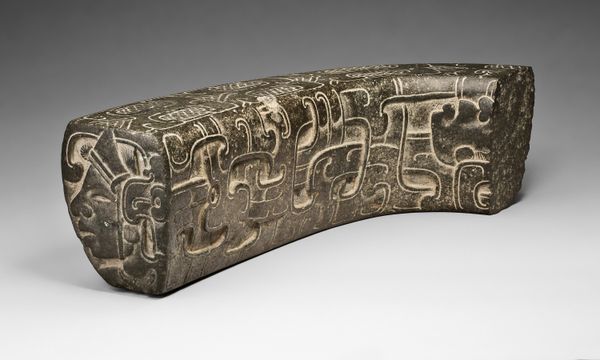
carving, relief, sculpture
#
carving
#
narrative-art
#
sculpture
#
textured
#
detailed texture
#
relief
#
sculptural image
#
figuration
#
sculpture
#
indigenous-americas
Dimensions: 43.2 × 25.1 cm (17 × 9.9 in.)
Copyright: Public Domain
Curator: What an extraordinary piece. This is a Maya "Ballplayer Panel," likely created sometime between 700 and 800 AD. You can find it here at the Art Institute of Chicago. Editor: The surface is remarkably intact; given its age and that it’s a stone relief carving. It gives the scene an almost dreamlike quality, as if we're peering directly into a moment frozen in time. Curator: It’s thought that these panels narrated significant historical events, often political or military in nature, acting almost as royal propaganda. The iconography certainly suggests an elevated status, if we analyze social strata and its effect on consumption and visual materials. Editor: And consider the physical labor involved in creating such a detailed piece using rudimentary tools! We see these objects today divorced from their making, from the artisan labor and its conditions and techniques required for something like this. What kind of access would ordinary citizens have to witness its creation, or later, its installation and use? Curator: Well, these panels were public art. Installed on buildings, they were meant to convey the power and legitimacy of the rulers and elites. The ballgame itself was more than a sport; it was a ritual, often tied to warfare and sacrifice. Editor: Right, the games functioned as spectacle, consolidating the ruler’s symbolic authority through visual and spatial means, right? It's such a potent combination of political theater and tangible representation. Curator: Exactly. It makes you think about how societies build monuments not just to celebrate, but to control narratives, especially how the museums collect, protect and frame public perceptions of history. It influences identity, power relations, and the art's perception itself. Editor: Absolutely. Seeing how deliberately crafted and strategically positioned this relief panel was, helps appreciate both the incredible skill involved in its production, and the deliberate socio-political statement being made. It's a stark reminder that art never exists in a vacuum. Curator: Agreed. And to think, the legacy continues right here within our museum today.
Comments
No comments
Be the first to comment and join the conversation on the ultimate creative platform.

